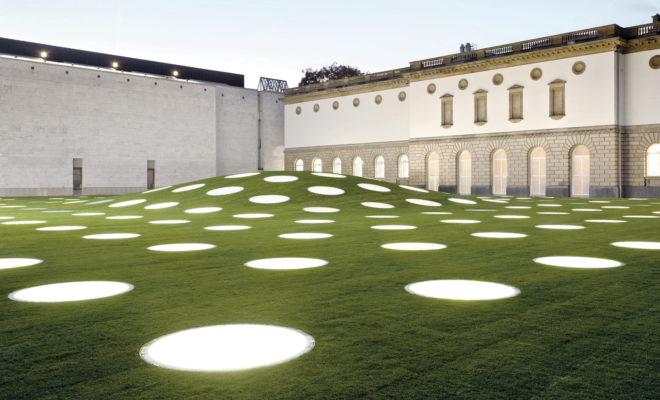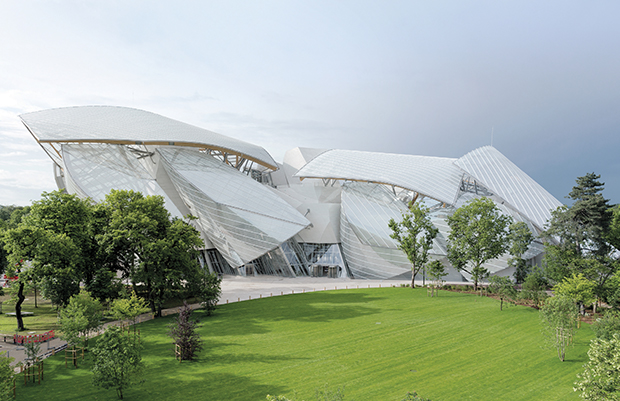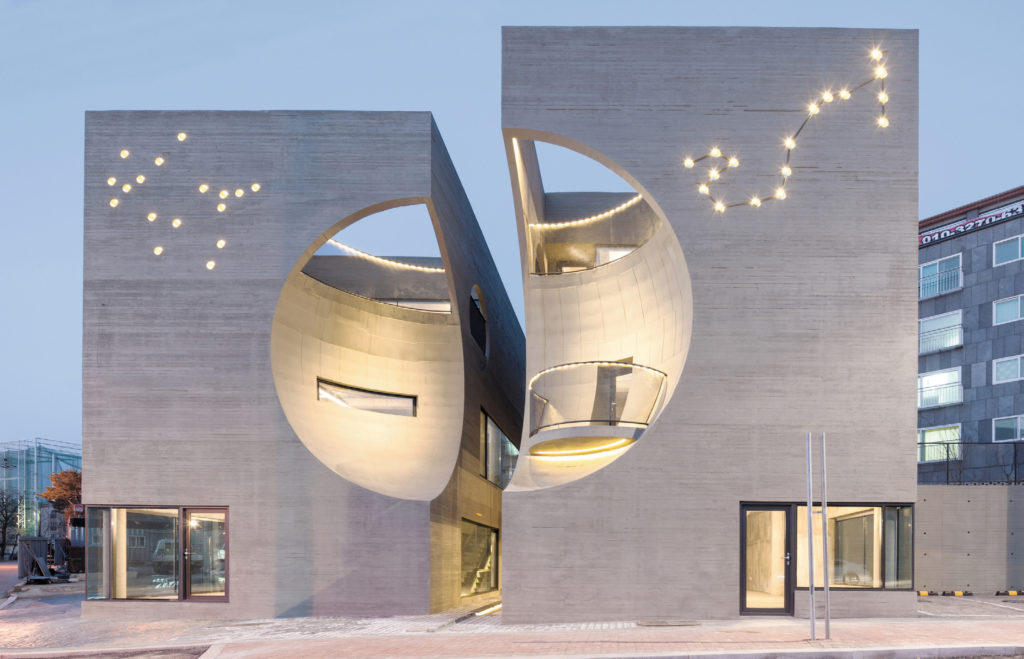 Städel Museum Extension, Frankfurt, Germany, 2012. Schneider+Schumacher (Germany). Submerged beneath an undulating expanse of grass, this museum extension adjoins the twentieth-century garden wing and houses contemporary art. The roof is supported by twelve reinforced-concrete columns and spans the entire exhibition space. Circular skylights in the lawn that are strong enough to walk on admit light to the galleries below, and create an almost surreal scene when uplit at night. | NORBERT MIGULETZ
Städel Museum Extension, Frankfurt, Germany, 2012. Schneider+Schumacher (Germany). Submerged beneath an undulating expanse of grass, this museum extension adjoins the twentieth-century garden wing and houses contemporary art. The roof is supported by twelve reinforced-concrete columns and spans the entire exhibition space. Circular skylights in the lawn that are strong enough to walk on admit light to the galleries below, and create an almost surreal scene when uplit at night. | NORBERT MIGULETZ
Architecture
Edifice treks
ARCHITECTURE HAS LONG BEEN a part of travel plans. On a first trip to Paris, who wouldn’t include a visit to the Eiffel Tower? But in 1997 a new type of tourism was born, when a museum opened in a congenial city of modest repute in northern Spain. The Guggenheim Bilbao was a stunner, a building like none ever seen before. Soon, visitors were flocking to marvel at its rolling, sweeping titanium-clad facade. The Frank Gehry–designed building itself—not the art inside, nor the city around it—was the object of their journey.

Fondation Louis Vuitton, Paris, France, 2014. Frank Gehry (USA) This contemporary art museum houses the collection of Louis Vuitton chairman Bernard Arnault. The building comprises an assemblage of white blocks (which Gehry dubbed the icebergs), clad in panels of fiber-reinforced concrete, as well as twelve enormous glass-paneled sails supported by wooden beams. The structure seems almost poised to float away over the surrounding Bois de Boulogne. | Iwan Baan
Since then, to instill awe has been the goal of every ambitious architect, and hundreds of municipalities the world over have seen the rise of dramatic new buildings that hope to command the attention of a growing class of architectural tourist. Destination Architecture: The Essential Guide to 1000 Contemporary Buildings (Phaidon, 2017) styles itself a comprehensive global travel guide to the contemporary built environment. The book includes sites from countries as culturally and geographically diverse as Argentina, Senegal, Denmark, the Philip- pines, Israel, Egypt, Lithuania, and the United States. The building types represented range from super- scale towers and tiny places of worship to high-tech cultural centers and regional rest stops.
ALL IMAGES COURTESY OF PHAIDON










